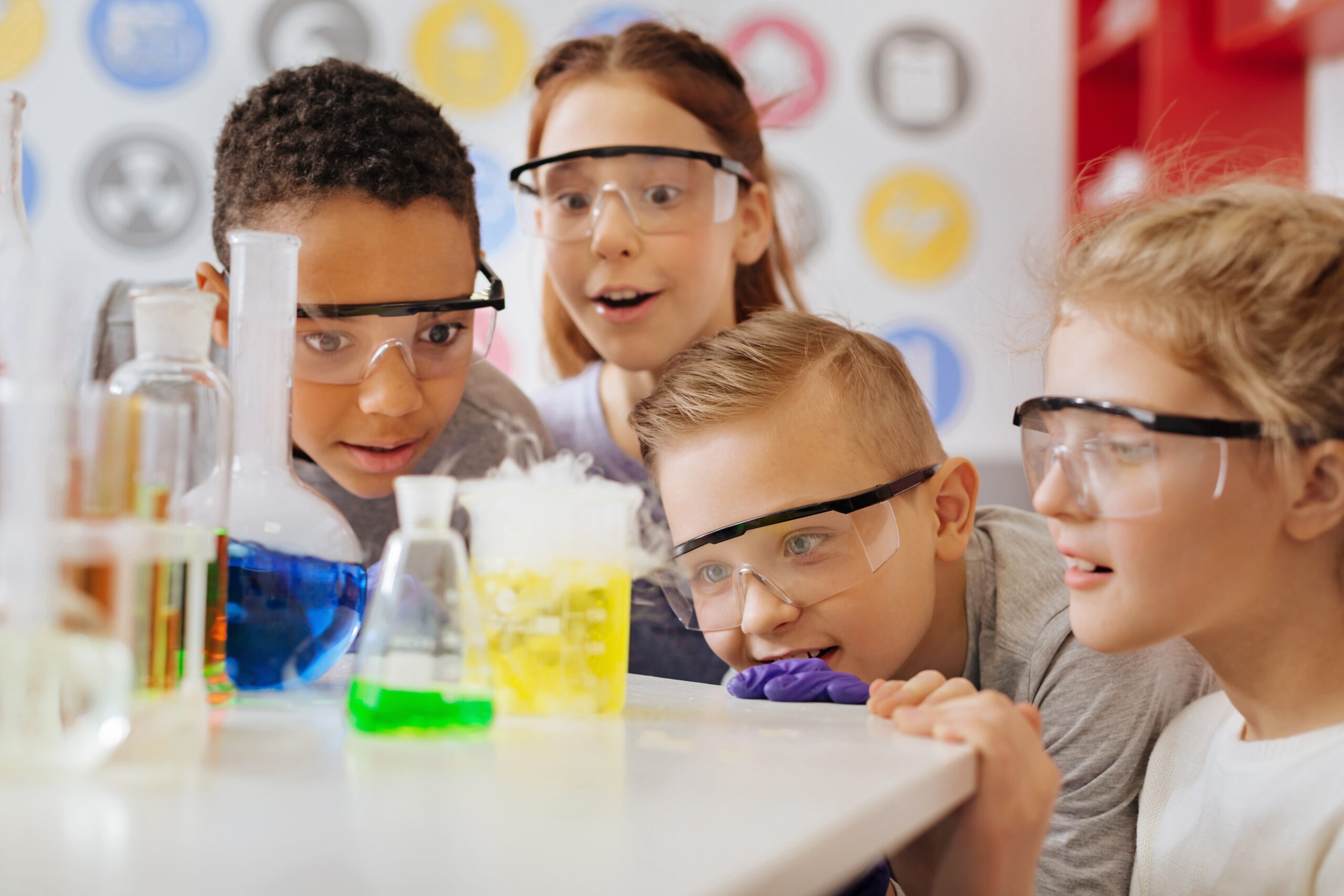Accidents in Science Class: How to Help Keep Kids Safe During Hands-On Experiments

Science class is one of the few parts of the day that students get to have a more hands-on learning experience, compared to math or English. Experimenting with chemical compounds and electrical currents can be fun and exciting but forgetting to keep safety guidelines in mind can compromise students’ safety.
We consider it a part of our job to make sure you have the tools to help ensure your students are as safe as possible. By putting in place a set of precautions for students to follow, you may be able to limit the number of accidents that occur in the classroom.
6 Lab Safety Tips to Help Prevent Accidents
Teachers do their best, but accidents are bound to happen as students get older and classroom experiments become more complex. Following these suggestions will help mitigate the risks children will encounter throughout their science education.
Reduce Crowding in the Lab Space
During group experiments, students should be sufficiently spread throughout the lab space to avoid overcrowding at the lab stations. Too many students in a cramped space is a ripe atmosphere for middle school and high school students to bump into each other, causing chemical spills or coming into contact with hazardous materials. Additionally, supervision is easier with smaller numbers of students in each group allowing for more elbow room in the lab. Provide a Demonstration Prior to Every Experiment
No matter how simple the assigned experiment may be, whether students are staring through a microscope or doing titrations, written instructions can’t always cut it. Some students are visual learners, so when they encounter information they’ve never seen before, it can be difficult for them to fully understand what they’re supposed to be doing and how to do it safely. It can never hurt, only help, to give kids a demonstration before turning them loose to do it on their own.
Inspect Classroom Safety Equipment for Functionality and Meeting Current Standards
In the science classroom, children come into contact with equipment and materials they can’t find anywhere else in the school. To accommodate that risk, science classrooms require extra safety equipment to prepare for possible situations. This equipment should include sinks for flushing skin, a shower to flush an entire body if needed, an eye washstand, fumigator hoods to vent toxic vapors, a fire blanket, and a fire extinguisher, along with enough personal safety equipment like goggles or gloves to supply your entire class. Each piece of equipment should be tested before an experiment to ensure it will work in the case of an emergency.
Impart the Importance of Lab Safety on Your Students
It is easy for students to get caught up in the excitement of an experiment, or complacent with the potential danger of the substances they’re handling. It is crucial you impart upon them the importance of lab safety and how to stay safe in your classroom. Reminding them of the little things, like wearing the correct attire and informing an adult if anything breaks or spills, keeps everyone accountable for their lab experience.
Have an Emergency Plan in Place
No matter how prepared you are, there is always a risk of an experiment going wrong. Having an emergency plan in place for various situations will limit the possibility of severe injuries and help you keep calm should an accident occur. Educate students on their role in these plans and make sure you have any emergency equipment available if it is needed for your plan.
Ensure Your Students Have a Positive Experience
Learning is meant to be fun and lab days are a great opportunity to boost your students’ engagement with the material. Providing your students with a safe environment to learn in will help them have a positive and enriching experience on lab days.
Stay Prepared with pomi
Pomi keeps your clients ahead of the game with our easy and customizable policies for you to choose from. We know that you understand your client’s needs best which is why we give you 24/hour access and complete control of the process. If none of our policies fit what your client is searching for, we will put you in touch with one of our policy experts and they can help you build the policy you need.

